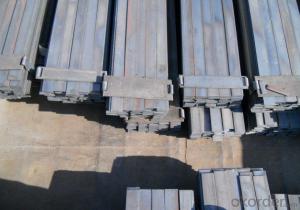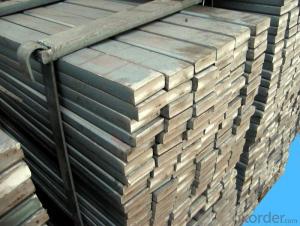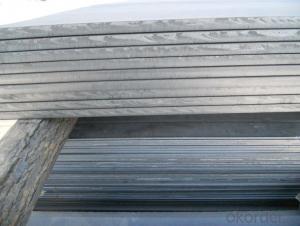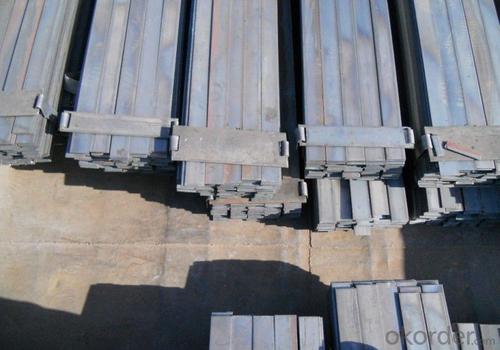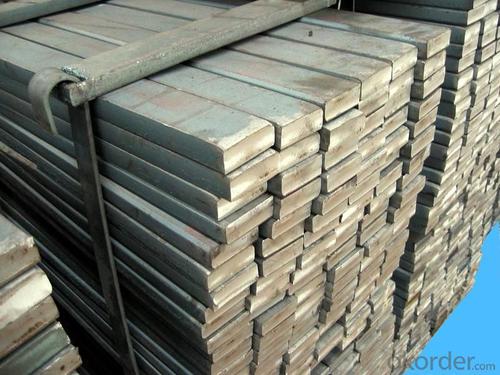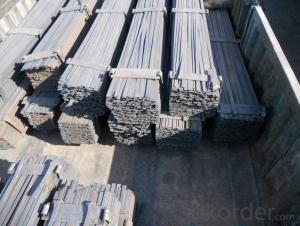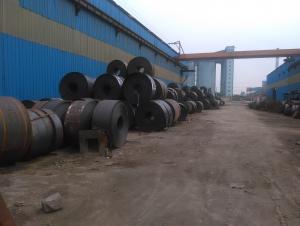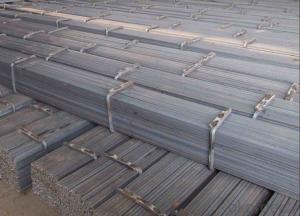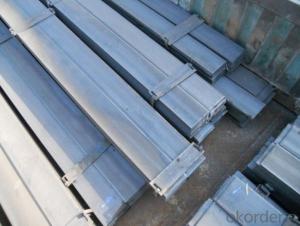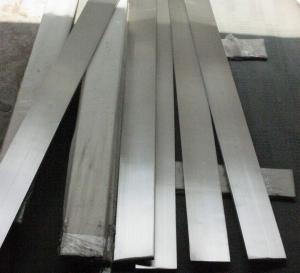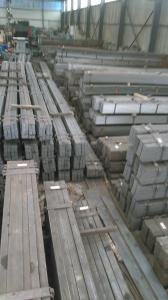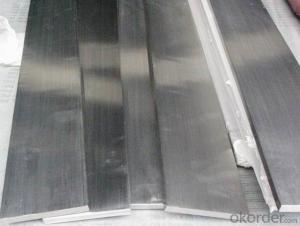Slit Cutting Flat Bar in Material Grade Q235B Steel Flat Bars
- Loading Port:
- Tianjin
- Payment Terms:
- TT or LC
- Min Order Qty:
- 25 m.t
- Supply Capability:
- 10000 m.t/month
OKorder Service Pledge
OKorder Financial Service
You Might Also Like
OKorder is offering high quality Slit Cutting Flat Bar at great prices with worldwide shipping. Our supplier is a world-class manufacturer of steel, with our products utilized the world over. OKorder annually supplies products to European, North American and Asian markets. We provide quotations within 24 hours of receiving an inquiry and guarantee competitive prices.
Product Applications:
Slit Cutting Flat Bars are ideal for structural applications and are widely used in the construction of buildings and bridges, and the manufacturing, petrochemical, and transportation industries.
Product Advantages:
OKorder's Slit Cutting Flats Barare durable, strong, and resist corrosion.
Main Product Features:
· Premium quality
· Prompt delivery & seaworthy packing (30 days after receiving deposit)
· Corrosion resistance
· Can be recycled and reused
· Mill test certification
· Professional Service
· Competitive pricing
Product Specifications:
Manufacture: Slit Cutting
Grade: Q195 – 235
Certificates: ISO, SGS, BV, CIQ
Length: 6m – 12m, as per customer request
Packaging: Export packing, nude packing, bundled
Chemical composition of Q235
Alloy No | Grade | Element(%) | ||||
C | Mn | S | P | Si | ||
Q235 | B | 0.12-0.20 | 0.3-0.7 | ≤0.045 | ≤0.045 | ≤0.3 |
Physical properties of Q235
Alloy No | Grade | Yielding strength point(Mpa) | Tensile strength (Mpa) | Elongation after fracture(%) | ||||||
Thickness (mm) | Thickness (mm) | |||||||||
≤16 | >16--40 | >40--60 | >60--100 | ≤16 | >16--40 | >40--60 | >60--100 | |||
≥ | ≥ | |||||||||
Q235 |
B |
235 |
225 |
215 |
205 |
375--500 |
26 |
25 |
24 |
23 |
Images:
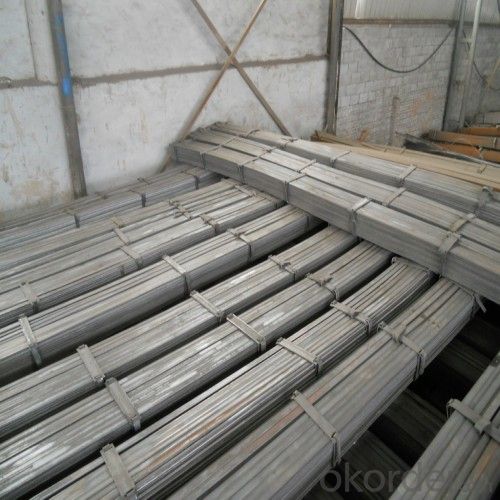
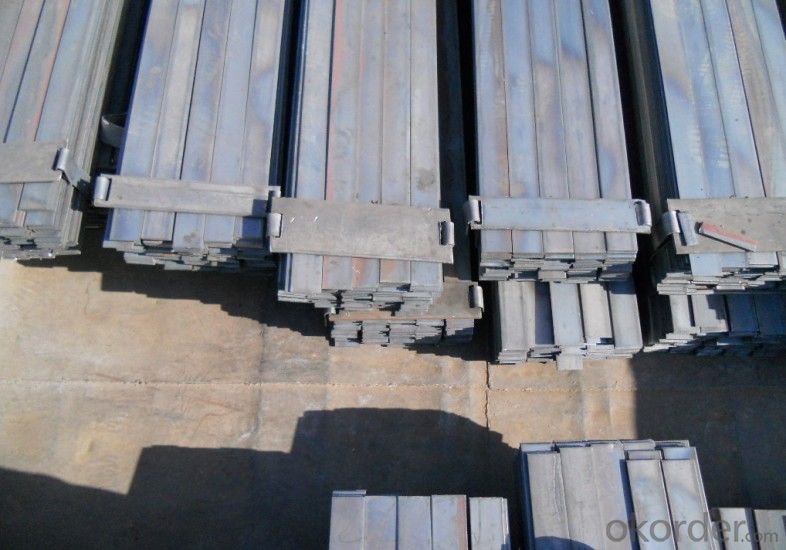
- Q: How do you store and transport steel flat bars safely?
- To store and transport steel flat bars safely, it is important to follow certain guidelines. Firstly, the bars should be stored in a dry and covered area to prevent exposure to moisture and rusting. They should be stacked horizontally on a flat surface, with proper support to prevent bending or deformation. Additionally, it is essential to secure the bars with appropriate strapping or banding to keep them in place during transportation. Using protective covers or wrapping each bar individually can also provide an additional layer of protection. Finally, when loading and unloading, it is crucial to use suitable equipment such as forklifts or cranes to avoid any accidents or injuries.
- Q: Do steel flat bars have a specific surface finish?
- Yes, steel flat bars can have various surface finishes such as mill finish, hot rolled, cold rolled, brushed, polished, or coated depending on the desired application or aesthetic appearance.
- Q: Can steel flat bars be welded?
- Certainly, it is possible to weld steel flat bars. Welding serves as a prevalent and extensively employed technique for connecting or restoring steel materials, which encompasses flat bars. The procedure entails heating the steel until it reaches its melting point and subsequently melding the two sections with the aid of a welding electrode or filler material. The resultant weld forms a robust and long-lasting bond, rendering it suitable for an array of applications within the construction, manufacturing, and other industries where steel flat bars are frequently utilized. Nonetheless, adherence to appropriate welding protocols and methodologies is crucial to guarantee a prosperous weld that possesses structural integrity.
- Q: Where is the use of flat steel in electrical use?
- Other equipment or cable bracket parts connected with bolts, flat width of less than 25mm with a 8mm bolt or two 6mm bolts. The width is less than 40mm by using two 10mm bolts, width 40-50mm uses two 12mm bolts, all bolts are galvanized, double single elastic gasket. In fact, all electrical components should be hot-dip galvanized (except welded steel pipe).
- Q: Are steel flat bars commonly used in the construction of transportation facilities?
- Yes, steel flat bars are commonly used in the construction of transportation facilities. They are often used for various structural applications such as building frames, supports, and railings due to their high strength and durability. Additionally, steel flat bars offer ease of fabrication and can be easily welded or bolted together, making them a popular choice in transportation infrastructure projects.
- Q: What is the typical yield strength of steel flat bars?
- The yield strength of steel flat bars can differ depending on the grade of steel employed. Nevertheless, the yield strength generally falls within the range of 30,000 to 80,000 pounds per square inch (psi) for most commonly used grades of steel. It is worth mentioning that factors like composition, heat treatment, and manufacturing process can affect the yield strength of the steel. Hence, it is advisable to refer to the material specifications or get in touch with the manufacturer for precise information regarding the yield strength of steel flat bars.
- Q: What is the maximum length of a steel flat bar?
- The maximum length of a steel flat bar can vary depending on several factors such as the manufacturing process, available resources, and transportation limitations. However, in general, steel flat bars typically come in standard lengths ranging from 6 to 12 meters (20 to 40 feet). These lengths are commonly used for ease of handling, storage, and transportation. In specialized cases, it is possible to manufacture or source longer steel flat bars, but they may be limited in availability and require special arrangements for handling and transportation.
- Q: Are steel flat bars resistant to heat?
- Steel flat bars generally have good resistance to heat. The exact level of resistance will depend on the specific type of steel used and its composition. Heat resistance is often measured by the material's ability to retain its strength and structural integrity under elevated temperatures. Steel is known for its high melting point, making it less susceptible to deformation or structural failure when exposed to heat. However, it is important to note that extreme temperatures, such as those encountered in a furnace or during prolonged exposure to high heat, can still cause some degree of thermal expansion or weakening of the steel. Therefore, while steel flat bars can generally withstand moderate heat, it is crucial to consider the specific application and potential temperature extremes when determining their suitability for a particular heat-related purpose.
- Q: What are the common methods of surface treatment for steel flat bars?
- The common methods of surface treatment for steel flat bars include galvanizing, painting, powder coating, and hot-dip coating.
- Q: What is the weight of a standard steel flat bar?
- The weight of a standard steel flat bar can vary depending on its dimensions and thickness. However, a typical standard steel flat bar may weigh around 3.5 to 7.5 pounds per foot.
Send your message to us
Slit Cutting Flat Bar in Material Grade Q235B Steel Flat Bars
- Loading Port:
- Tianjin
- Payment Terms:
- TT or LC
- Min Order Qty:
- 25 m.t
- Supply Capability:
- 10000 m.t/month
OKorder Service Pledge
OKorder Financial Service
Similar products
Hot products
Hot Searches
Related keywords

